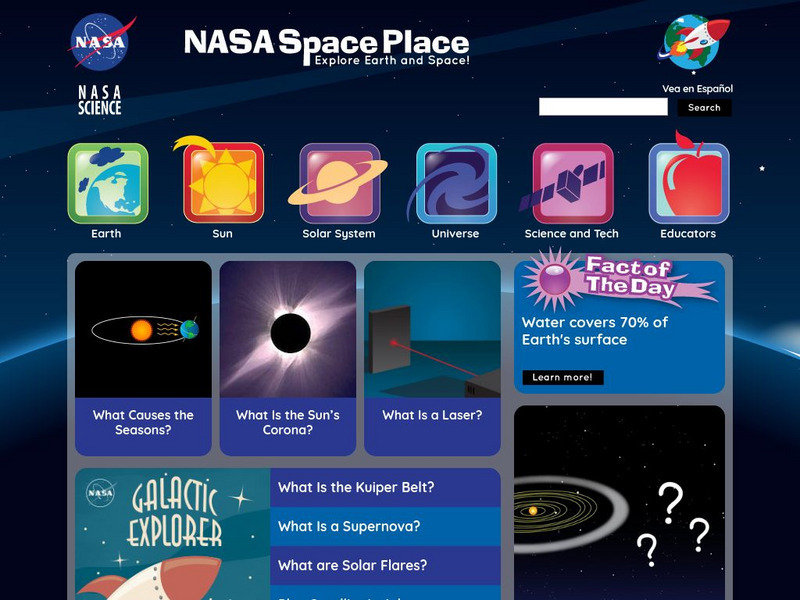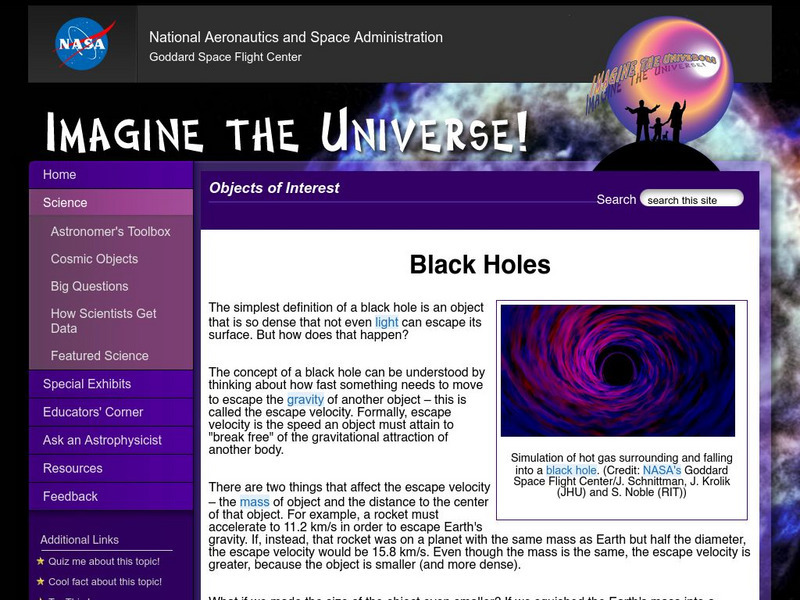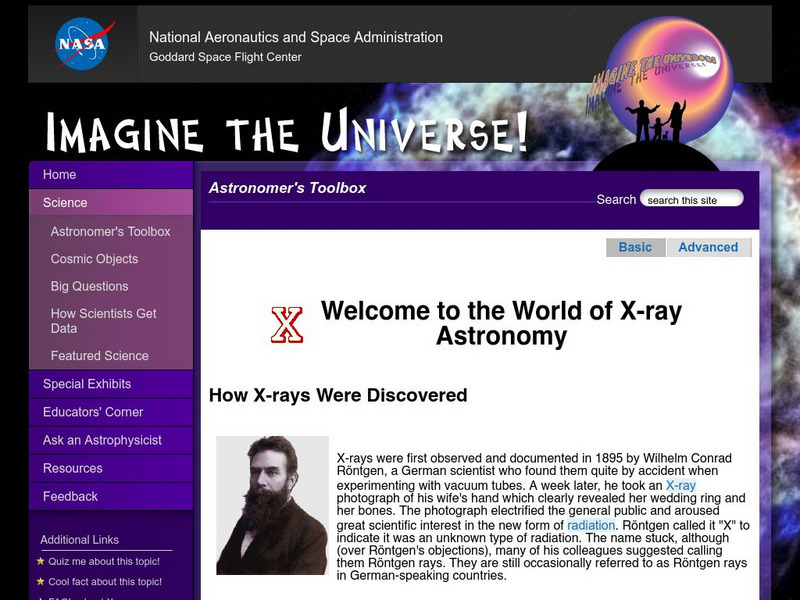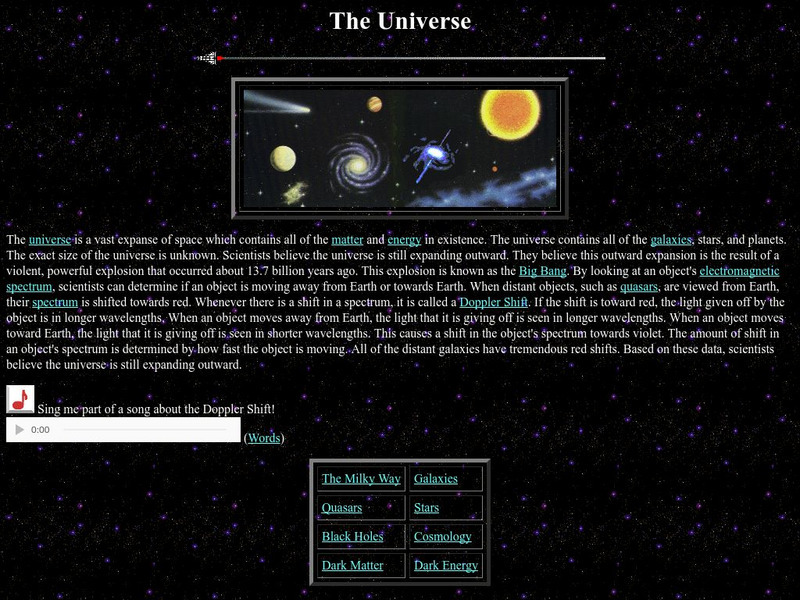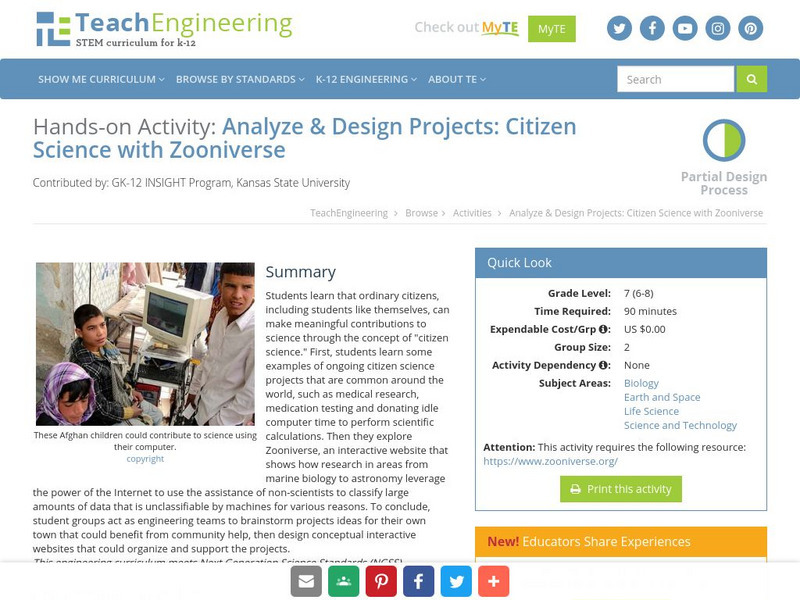NASA
Nasa: Imagine the Universe: Active Galaxies and Quasars
Describes quasars as being classified within the category of an active galaxy. A description of the emergence of high-energy. Definitions of key words are provided.gamma-ray quasars as an important component of the gamma-ray sky.
Harvard University
Quasars and Active Galaxies
This site provides information about quasars and active galaxies. Includes a glossary of important terms.
National Earth Science Teachers Association
Windows to the Universe: History & People
Biographies of people throughout history who looked at the sky and wondered what was there. Links to a detailed description of the planets and interactive activities.
PBS
Pbs Learning Media: Spin a Spiral Galaxy
This interactive activity from NOVA Online lets you spin a spiral galaxy, including our own Milky Way. It demonstrates that what you can learn from visible light observations of a galaxy is largely determined by the angle from which you...
Ministerio de Educación (Spain)
Ministerio De Educacion: Cuasares Y Otras Galaxias Activas Modulo Vii Unit 3
In this module you can learn about the active galaxies, quasars and the effect of the gravitational lens.
Space Telescope Science Institute
Space Telescope Science Institute: Amazing Space
Amazing Space promotes the "science and majestic beauty of the universe for use in the classroom." Here you can find learning activities, lesson plans, teaching guides, and helpful tips for students eager to learn about space and space...
Other
Esl Galaxy
Free help for the ESL teacher. You must have Windows Media Player installed to view some of the resources.
NASA
Nasa: Imagine the Universe: Fa Qs on Quasars
A list of answers to many questions related to quasars and active galaxies.
Houghton Mifflin Harcourt
Holt, Rinehart and Winston: Elements of Literature: Guide to Hitchhiker's Guide to the Galaxy [Pdf]
This guide to the Hitchhiker's Guide offers a book at a glance feature, chapter by chapter summaries, and other good information.
NASA
Nasa: The Space Place
Do you know what a solar eclipse is? Or how about a galaxy? Space Place has the answers to all your questions about space! Site includes information to explore about planets, satellites, moons, and much more. Also on the website are...
Other
Paper Plate Education: Serving the Universe on a Paper Plate
Excellent resource for "paper-plate" activities that help simplify various astronomy topics. Learn how to build a "Moon Finder" and "Planet Pointer," and create a paper-plate model that explains the Transit of Venus.
NASA
Nasa: The Space Place
This site from NASA's Space Place is geared towards early elementary learners. It offers detailed instructions for crafts and activities related to space, games and a teacher resource area. Students can also ask an expert at this site.
NASA
Nasa: Imagine the Universe: Black Holes
Learn what black holes are and the myths that surround them.
American Association of Physics Teachers
Com Padre Digital Library: Physics to Go: Explore Physics on Your Own
Contains a full physics curriculum with links to games, webcasts, and activities. By creating a free account, students and teachers can create their own personal collection of resources.
NASA
Nasa: Imagine the Universe: Welcome to the World of X Ray Astronomy
Site recounts how X-rays were discovered as well as who discovered them. Offers graphics, links to facts on this topic, a quiz, and teacher resources.
NASA
Nasa Star Child: The Universe (Level 2)
This site provides a description of the universe and what it contains. Includes links to definitions, activities, and an audio song. Printable version available.
Other
Astromador: Astronomia Para Amadores
This resources focuses exclusively on astronomy. It's packed with historical facts about space exploration, famous people who pioneered the study of stars and planets. It features chronological list of space exploration, current news,...
Wikimedia
Wikipedia: The Black Hole
This site examines the black hole as an object in astrophysics. Delve into this comprehensive resource that covers this concept from its history, to qualitative physics, the reality of black holes, mathematical physics and more.
TeachEngineering
Teach Engineering: Citizen Science With Zooniverse
Students learn that ordinary citizens, including students like themselves, can make meaningful contributions to science through the concept of citizen science. Student groups act as engineering teams to brainstorm projects ideas for...
National Gallery of Art
National Gallery of Art: The Fall of Phaeton
Young scholars will be introduced to the Greco-Roman myth of Phaeton and how he created the Milky Way galaxy by critically analyzing The Fall of Phaeton by Rubens. They will then create their own constellation to be displayed in a...
PBS
Pbs Learning Media: Birth of a Supernova, Type Ia
In this interactive activity from NOVA Online, learn about a type of exploding star - a Type Ia supernova - that is so bright that astronomers can measure the distance to the galaxy in which it resides, and even learn which elements make...
University of Texas at Austin
The University of Texas Mc Donald Observatory: The Milky Way
Learners will work in groups to make up a story and picture that explains how someone living thousands of years ago in their location might have explained the Milky Way.
Enchanted Learning
Enchanted Learning: Zoom Astronomy
Where is our Solar System? How far away is the sun? What makes up the sun? Find out all you want to know about our solar system. This is a comprehensive on-line site about space and astronomy. Check out all of the excitement!
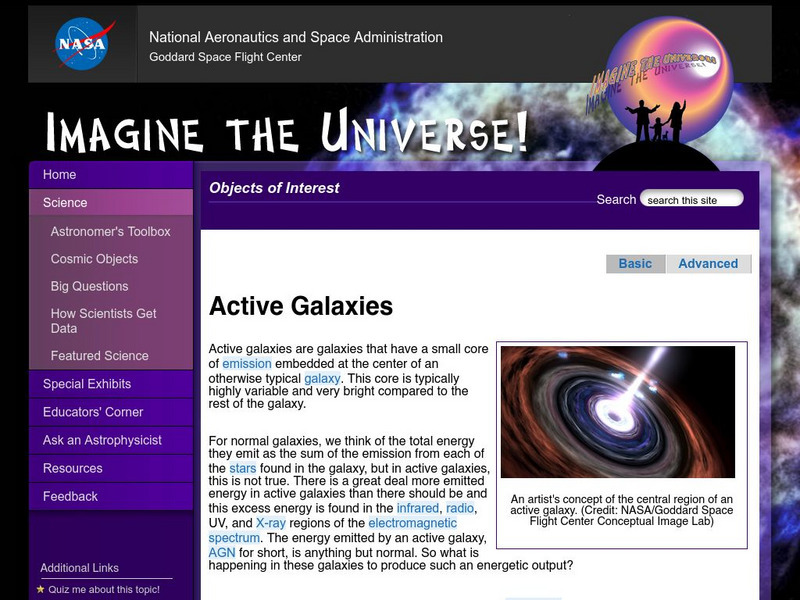

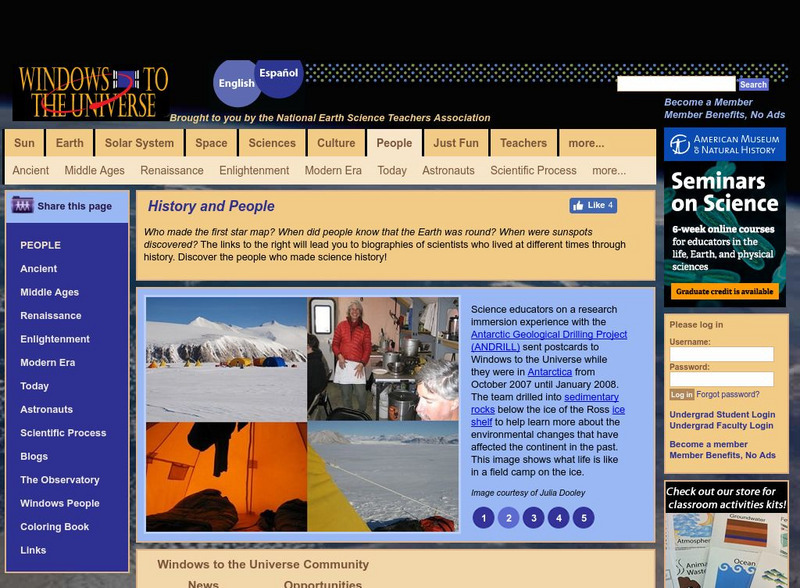

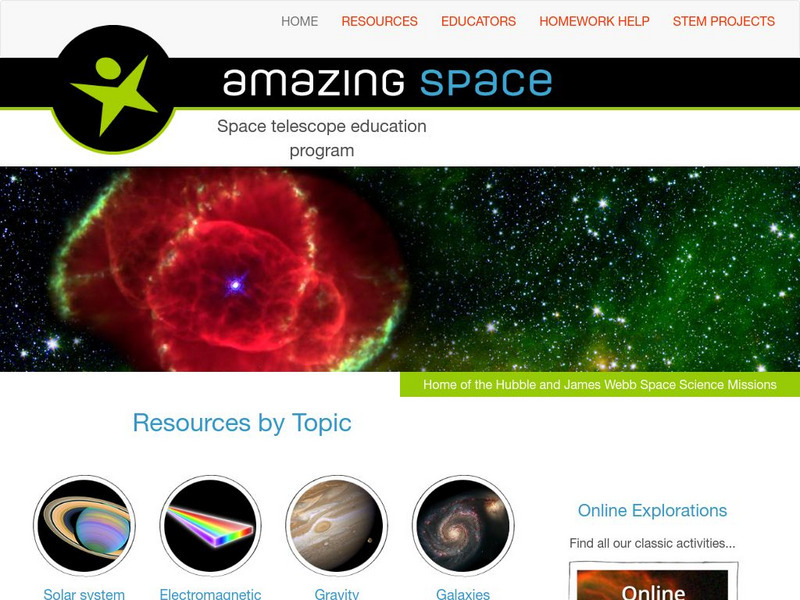


![Holt, Rinehart and Winston: Elements of Literature: Guide to Hitchhiker's Guide to the Galaxy [Pdf] Unit Plan Holt, Rinehart and Winston: Elements of Literature: Guide to Hitchhiker's Guide to the Galaxy [Pdf] Unit Plan](http://content.lessonplanet.com/resources/thumbnails/410087/large/bwluav9tywdpy2symdiwmduymc0xntu3mc12chjjotcuanbn.jpg?1589985329)

